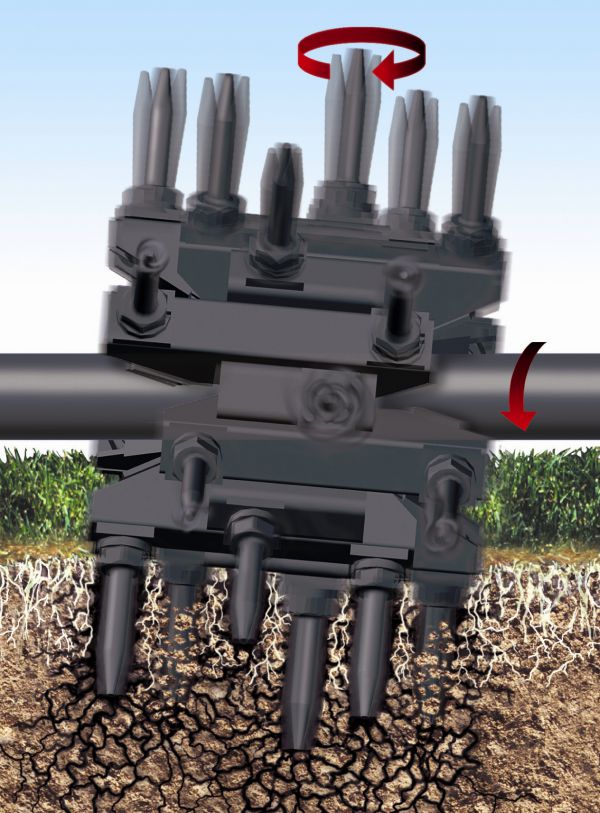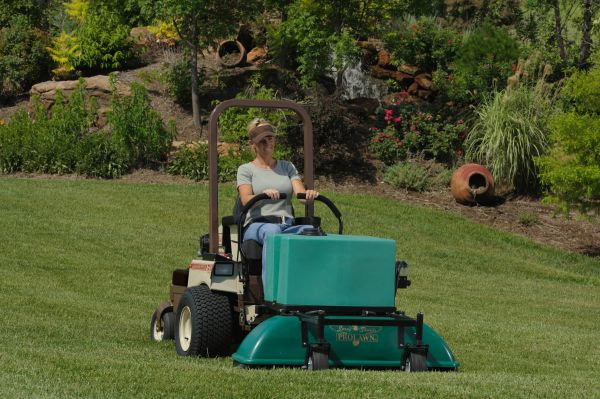Lawn Care Tip of the Month: Fall overseeding & fertilizing
Posted on:Sep 19, 2016
This is Part IX of our Lawn Care Tip of the Month blog series.
What's not to love about Fall? The temperatures trend cooler, bringing a more than welcome respite from the summer heat. The leaves begin to change color. Your local coffee shop brings back "PSL" . . .
Okay, maybe you don't care so much about pumpkin spice lattes, but you should definitely care about your lawn in the fall. The next two or so months' work will make a "YUGE" difference in your lawn come spring next year. So, buckle up, because there is a lot to cover in this installment of Lawn Care Tip of the Month.
Fall Aeration

Think of aeration as a massage for your lawn. Sometimes, you need deep tissue therapy after a stressful day or week. Well, your lawn just came out of a stressful summer season, so it's going to need some deep penetrating therapy, too.
Aerating counteracts the damage from heat and dryness of summer and creates optimum lawn conditions for continued fall maintenance. Most importantly, aeration relieves soil compaction, which improves permeability, water infiltration and nutrient absorption in the root zone.
To prepare the lawn for aerating, cut the grass a bit shorter than its optimal height, so you to see the pattern of your aeration and increase your process precision. But don't cut it short all at once! Incrementally lower your cutting height over a few mowings, following the “1/3 Rule,” to avoid unnecessary stress on the lawn.
Once the lawn is properly prepped, you’re ready to aerate. Of course, we recommend a CORELESS aerator, such as the Grasshopper AERA-vator coreless lawn aerator attachment. The oscillating steel tines deep-fracture hard, dry soils, and leaves no unsightly cores laying on the surface. This process promotes an enhanced environment for the grassroots, while effectively preparing the yard for the next steps of the lawn maintenance process, fertilizing and seeding.
Fall Overseeding
If you've been maintaining your yard properly throughout the year, you won't need to do much fertilizing or overseeding, beyond putting down a good winterizer fertlizer later in the season. However, yards with extensive damage or bare spots will require more intensive care.
Where grass is sparse, thin or completely dead, uniformly distribute grass seed over the desired area in criss-crossing pattern for a complete and even coverage. Next, ensure the seed is in contact with the soil. This seed-to-soil contact is essential for root growth.
PRO TIP >> Aerating before you overseed is a great way to promote seed-to-soil contact!
After the seed is sown, frequently apply light sprinkles of water to the newly seeded sections to keep the soil moist while the seeds sprout. Gradually increase the amount of time between waterings to encourage roots to grow deeper into the soil.
Fall Fertlizers: Short-Term and Long-Term Benefits
 A proactive fertilizing regimen in the fall will deliver essential nutrients now that are necessary for a healthy lawn in the spring.
A proactive fertilizing regimen in the fall will deliver essential nutrients now that are necessary for a healthy lawn in the spring.
It's important to apply two different types of fertilizers at their respective times. The first application should be done in the early fall, ideally before a day of light, steady rain. The cooler weather, warm soil and ample rain creates the perfect environment for strong grassroots to develop and grass seeds to germinate. Apply a nitrogen-rich, slow-releasing fertilizer to encourage growth and provide essential nourishment.
The second application — a winterizer — is done later in the season and is the final application of the year. Designed specifically for late-fall manicuring, this type of fertilizer has a different chemical makeup than others. It is comprised of three major nutrients: potassium, nitrogen and phosphorus. Potassium helps the roots absorb other nutrients while strengthening and hardening the grass, which enhances the lawn’s winter weather tolerability. Nitrogen is a common component in other fertilizers, but the amount present in winterizer is dramatically decreased to stimulate only modest growth. Phosphorus enhances root growth, repair and production.
Both granular or liquid fertilizers will work, but the liquid variety will provide a more even coverage and a more effective application. A Grasshopper Shielded Sprayer is a great way to apply fertilizer (and herbicides, insecticides and fungicides, too).
For even more fall lawn care tips, check out this article from Yard Day.

